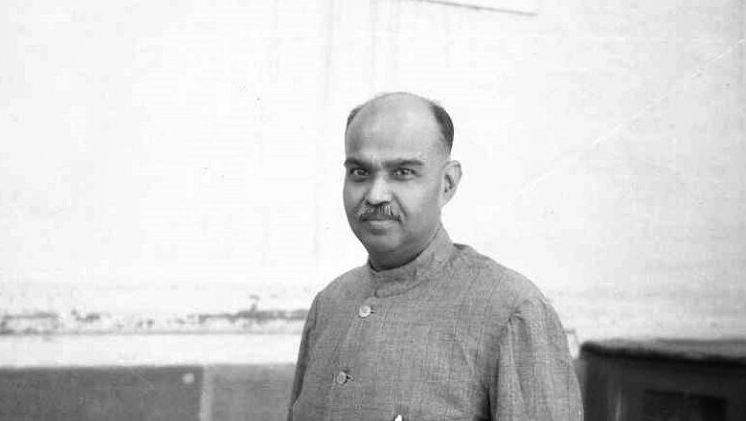One of the finest political minds and a visionary way ahead of his time — BJP is celebrating the 120th birth anniversary of its leader and Jansangh founder Dr. Syama Prasad Mukherjee today (July 6). Several big-ticket programs have been planned by BJP in the ruling states. Recently, on June 23, the death anniversary of Mukherjee, BJP President JP Nadda started a mass campaign to plant 5 lakh trees in the capital.
Rather casually sidestepped by left-liberal historians in the history books, it was Dr. Syama Prasad Mukherjee who had first brought the issue of complete integration of Jammu and Kashmir, like any other state, into the mainstream. He vehemently opposed the enactment of article 370.
After the merger of the state with the Union of India, Dr. Mukherjee had questioned the rationale behind having ‘Sadr-e-Riyasat’ instead of governors and a Prime Minister instead of Chief Ministers in the state of Jammu and Kashmir.
It was he who coined the popular slogan, “Ek desh mein do Vidhan, do Pradhan aur do Nishan nahi chalenge (There cannot be two Constitutions, two Prime Ministers and two flags in one nation)”. Dr. Syama Prasad Mukherjee exemplified fearlessness and courage by going against the permit rule during the days of the Nehru government whereby anyone travelling to the state of Jammu & Kashmir was required to obtain a permit.
Mukherjee’s entourage decided to enter Jammu & Kashmir without any permit in order to ensure there was no sense of alienation in the border state. Ultimately, he was arrested by the Sheikh Abdullah government in Jammu & Kashmir and passed away on June 23, 1953, in mysterious circumstances.
As the President of Hindu Mahasabha, Mukherjee united the Hindu voices and protected Hindus against the divisive agenda of the Muslim League. However, he did not want the Hindu Mahasabha to be restricted to Hindus alone, so he used it as a platform to render service to the masses.
Born in Kolkata on July 6, 1901, Syama Prasad’s father Sir Ashutosh Mukherjee was a popular academician and barrister. He was called the tiger of Bengal while Mukherjee’s mother Jogmaya Devi was also among the most learned women of that time. In 1929, Syama Prasad Mukherjee was elected as a member of the Bengal Legislative Assembly for the first time as a Congress member, but the very next year after disagreeing with the Congress, he decided to contest as an independent and won the election.
Due to several incidents, Mukherjee boycotted the Quit India Movement in the freedom movement. He believed that the cultural integrity of the country could be endangered by provoking popular sentiments through this program. However, his aim was for the protection and independence of the province and not in favour of the British power. The Jana Sangh, led by Syama Prasad Mukherjee even opposed the partition of the country.
When India received its long-overdue independence from the vile Britishers, Mukherjee joined the interim central government, led by Jawaharlal Nehru, on an invitation from Mahatma Gandhi. He was made Union Minister for Industry and Supply. As the Industry Minister, Mukherjee sowed the first seeds of India’s industrialisation movement.
However, sensing Nehru’s misplaced allegiances to the Muslim leaders of Pakistan, Mukherjee laid the foundation of Bharatiya Jan Sangh (BJS) in 1951 which later became Bharatiya Janata Party (BJP). He and Vinayak Damodar Savarkar are described as the proponents of Hindutva ideology in the country.
It was because of Syama Prasad Mukherjee that for the first time that the public had another option on the political battlefield. Congress had a staunch opponent in Jan Sangh at last and while it took the latter some time to get going, it eventually paved way for the modern politics in India.
PM Narendra Modi on several occasions has remarked that he wants an India of the dreams of Mukherjee, who wanted to see a unified Bharat, not only in territorial aspects but also in a cultural and linguistic manner.
